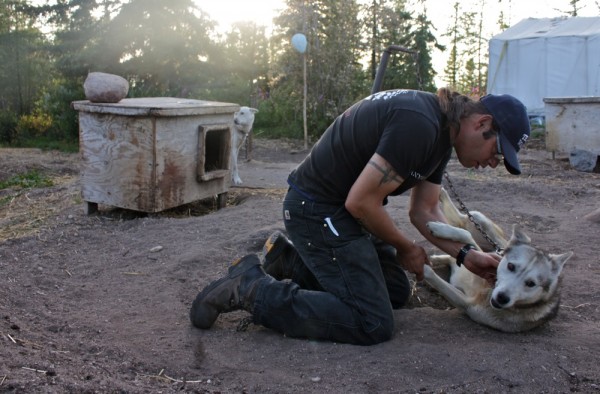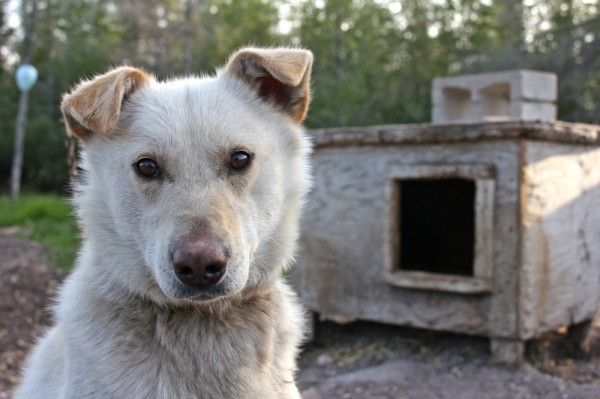If dogs are man’s best friend, then Dave Daley has 30 or so best friends.
But I’ll venture Dave’s sled dogs — a boisterous pack of mostly white mongrels that fill a rutted dirt and pine tree lot — don’t see Dave as a friend. I believe they revere him as god. The sun rises and the moon sets when Dave says it does. Food arrives, training commences, care and love are administered by Dave’s hand and at his command. And nothing excites the pack of dog-athletes more than the thought of Dave unclipping them from their chain and slipping the sledding harness over their muzzle.


